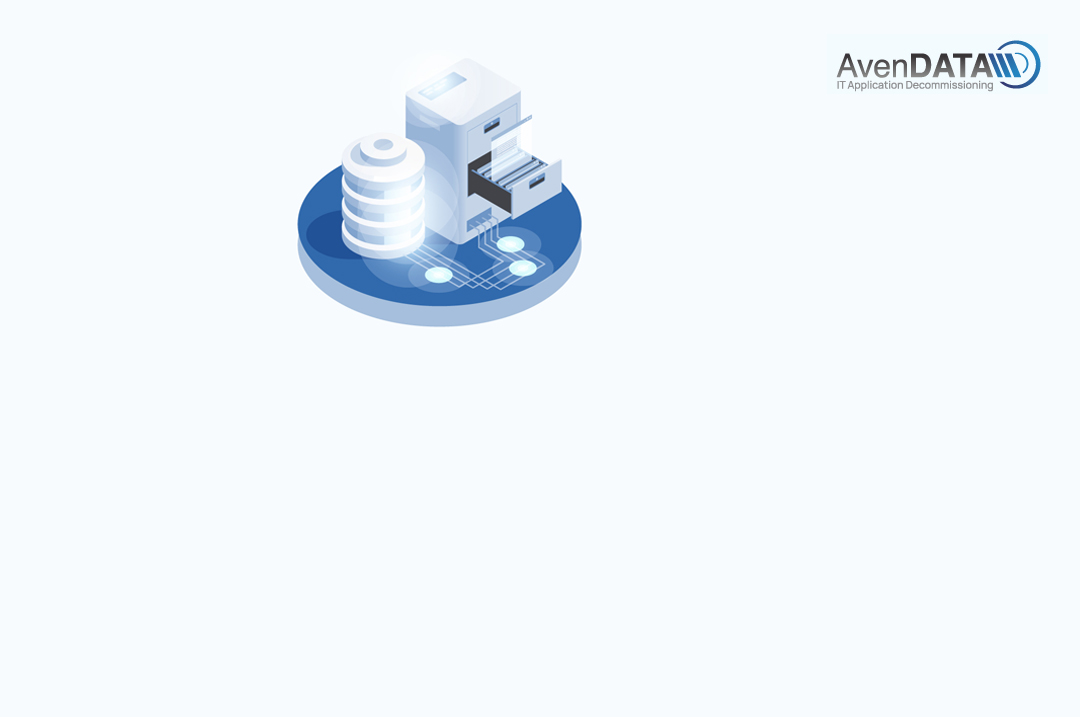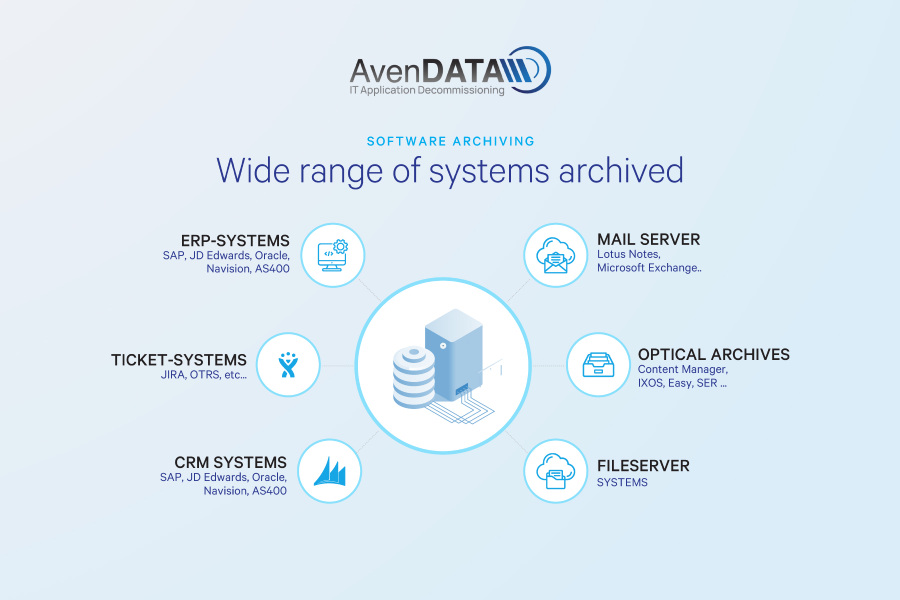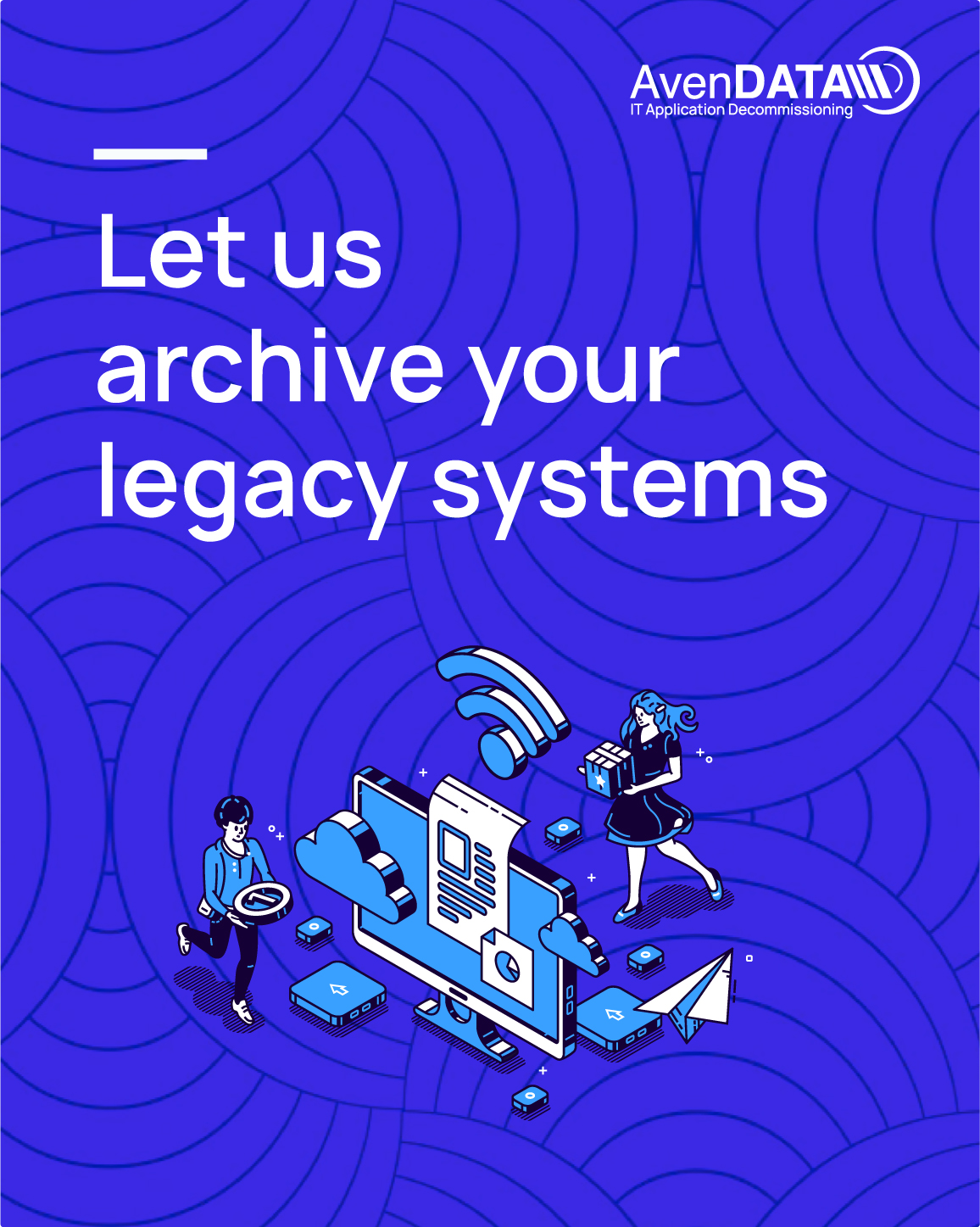Legacy Systems: Definition, Types, Advantages & Disadvantages, Examples, Modernization
By AvenDATA

- Introduction of Legacy Systems
- Why are legacy systems still used?
- Examples of Legacy Systems
- Types of Legacy Systems
- Advantages & Disadvantages of Legacy Systems
- Legacy Systems Modernization
- Comparison with Modern Systems
- Why Archive Legacy Systems
- Conclusion
What is a legacy system?
Definition: A legacy system refers to outdated computer software, equipment, hardware, or technology that is still used in daily operations. These systems lack support, maintenance, and future development. Examples include older operating systems like Windows XP, Windows Vista, and Windows 7. While the legacy system may still be functional, it often hinders the organization’s ability to stay competitive in the market due to its limitations.
- Outdated System
- Obsolete System
- Aging Infrastructure
- Heritage System
- Antiquated System
- Vintage Technology
- Traditional System
- Old-School System
- Historical System
- Dated Technology
- Inherited System
- Ancient System
Why are legacy systems still used?
Legacy systems were built for specific purposes, such as controlling a factory or managing an airport. They may have been designed for one purpose but are now used for a different purpose, such as customer relationship management (CRM) software that was originally designed for sales and marketing applications.
Legacy systems and applications continue to be used for several reasons, despite their outdated nature. Here are some common reasons:
- Investment Protection:
Companies may have made significant financial investments in developing or customizing legacy systems. The cost of migrating to a new system can be prohibitive, making organizations hesitant to abandon their existing infrastructure. - Business Critical Processes:Legacy systems often support critical business processes that are deeply embedded within an organization. Replacing these systems may disrupt essential operations and jeopardize business continuity.
- Fear of Change:Resistance to change is a common human trait, and this extends to organizational structures and systems. Employees may be comfortable with familiar interfaces and workflows, making the prospect of transitioning to a new system daunting.
- Obsolete Technology:Some legacy systems may be built on outdated technology or programming languages that are no longer widely supported. The lack of available expertise in these technologies makes migration a complex and risky endeavor.
- Lack of Documentation:Over time, documentation for legacy systems may become scarce or non-existent. This lack of documentation makes it challenging to understand the system’s intricacies, leading to uncertainty about the impact of migration.
Examples of Legacy Systems
1. Mainframe Computers Mainframes are a classic example of legacy hardware. While they still power critical functions for many organizations, their technology is decades old. Many financial institutions, for instance, rely on mainframes for their core banking systems.
2. COBOL Applications COBOL (Common Business Oriented Language) is a programming language developed in the 1950s. Many organizations still use COBOL-based applications for functions like payroll processing, despite the language’s age and declining popularity.
3. Old ERP Systems Enterprise Resource Planning (ERP) systems are crucial for managing business processes. Some organizations continue to use outdated ERP software versions because migrating to a newer system can be complex and costly.
4. Legacy Database Systems Databases using older technology like dBase, FoxPro, or even early versions of SQL databases may still be in use for specific applications, despite the availability of more modern database solutions.
5. Custom-Built Systems Some organizations have custom software applications or systems developed in-house using technologies that have become outdated over time. These systems are often challenging to maintain and enhance.
Types of Legacy Systems
1. Hardware Legacy Systems These are legacy systems that involve outdated hardware components. Examples include old mainframe computers, proprietary hardware, and discontinued server architectures. These systems may require specialized maintenance and expertise.
2. Software Legacy Systems Software legacy systems are characterized by outdated software applications and codebases. This category includes applications developed using deprecated programming languages, obsolete software libraries, or operating systems that are no longer supported.
3. Infrastructure Legacy Systems Infrastructure legacy systems encompass outdated network architectures, communication protocols, and data storage methods. Organizations may still rely on legacy infrastructure due to the cost and complexity of upgrading.
4. Application Legacy Systems Application legacy systems refer to software applications or modules that have become outdated but are still essential for specific business functions. Examples include legacy CRM (Customer Relationship Management) systems or order processing applications.
5. Database Legacy Systems Legacy database systems involve outdated database management systems (DBMS) or data storage structures. Migrating data from these systems to modern databases can be challenging due to differences in data models and schemas.
6. Custom Legacy Systems Custom-built legacy systems are unique to an organization and may include a combination of outdated hardware, software, and infrastructure components. These systems are often tightly integrated with the organization’s processes and can be difficult to replace.
7. End-of-Life Systems End-of-life legacy systems are those for which the vendor has officially ceased support and development. These systems are particularly vulnerable to security risks and may require immediate attention or replacement.
Advantages & Disadvantages of Legacy systems

Advantages of Legacy Systems:
1. Proven Reliability: Legacy systems have stood the test of time. They’ve proven their reliability by functioning effectively for years. Organizations can count on these systems to keep their operations running smoothly.
1. Costly Maintenance: Legacy systems can become expensive to maintain as they age. Finding skilled professionals to manage and troubleshoot these systems can be challenging and costly.
Organizations must carefully weigh these pros and cons when deciding whether to continue relying on legacy systems or invest in modern solutions that can drive innovation and efficiency.
Legacy Systems Modernization

Legacy system modernization is a basic endeavor for associations expecting to
remain cutthroat, improve functional productivity, and adjust to the developing innovative
scene. In this thorough aide, we’ll investigate the ideas, methodologies, difficulties, and
advantages related with modernizing Legacy systems.
Legacy System modernization alludes to the most common way of redesigning or
changing obsolete programming, equipment, or foundation parts to adjust them to current
mechanical guidelines and business needs. Legacy Systems are commonly described
by obsolete innovation stacks, old programming dialects, and an absence of versatility or
adaptability. Modernization plans to resolve these issues while protecting the important
information and usefulness of the current framework.
Modernization Approaches
There are various approaches to legacy systems or applications modernization, each tailored to the specific needs and constraints of an organization:
Legacy system or application modernization is a strategic investment that enables organizations to harness the full potential of their existing systems while preparing for future challenges and opportunities. By addressing the limitations of legacy applications, organizations can enhance efficiency, reduce costs, improve security, and remain agile in a rapidly evolving business landscape.
Why do we need to archive legacy systems?
- Initially developed with little or no documentation and with standardized interfaces
- High implementation and maintenance costs
- These systems are not supported by the manufacturer
- Unavailability of competent personnel to manage these legacy systems
- These systems are prone to security risks as they lack compatibility with the latest security features

legacy systems are a common challenge for organizations across various industries. They is
they can be a source of stability; they also pose risks and limitations. Effective management
and, when necessary, replacement or modernization of legacy systems are crucial for
organizations to remain competitive and secure in the ever-evolving world of technology.
Legacy systems continue to be used due to factors such as investment protection, business-critical processes, resistance to change, obsolete technology, and lack of documentation.
Legacy systems offer proven reliability, data preservation, cost-effectiveness, and require minimal training for experienced employees.
Disadvantages include costly maintenance, functionality issues hindering innovation, compatibility issues with modern technologies, and security vulnerabilities.
Disadvantages include costly maintenance, functionality issues hindering innovation, compatibility issues with modern technologies, and security vulnerabilities.
Legacy system modernization involves upgrading or transforming outdated software, hardware, or infrastructure components to align them with current technological standards and business needs.
Legacy systems tend to slow down IT processes and are unable to accommodate technological changes or evolving customer requirements. They often lack standardized interfaces, come with high maintenance costs, and pose security risks. Archiving legacy systems helps organizations address these challenges and ensure data security and manageability.
-
How Legacy Systems Work and Their Architecture
-
Legacy Systems in Digital Era:
-
SAP Carve-Out Guide: Definition, Process, Benefits
-
System Decommissioning: A Strategic Guide
-
20 Reasons why legacy ERP systems must be archived and data should not be deleted
-
IT Mergers and Acquisitions: The ABCs of a Successful Integration
-
Mastering IT M&A and Carve-Outs: Addressing Pain Points with Practical Solutions
-
Modernizing Legacy Systems: A Strategic Guide for IT Company Owners
-
The importance of legacy systems is steadily increasing
-
Ten Key Questions with Emanuel Boeminghaus



